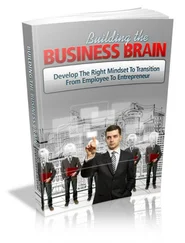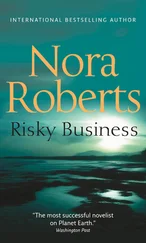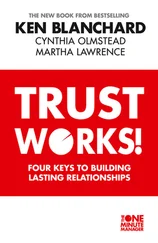Our attitudes and habits are largely determined by the world view set in our childhood. Therefore, an individual born into poverty who then climbs the economic ladder into the middle class or better will not easily move their motivations up Maslow's hierarchy of needs. Those first-generation middle-class individuals are much more likely to remain firmly rooted in a “safety” mindset.
We all have known people like that, classically characterized by epic work ethics and rigorous frugality. In North America, Western Europe, Australia, and New Zealand, these were the characteristics of the “Greatest Generation,” those born in the 1910s and 1920s who came of age in the midst of the Great Depression of the 1930s and who helped win World War II. My grandmother was one of them
Genevieve Jackson Kiser became a widow when her husband—my grandfather—succumbed to pneumonia in 1936. She was left with four young children and no family support. Her oldest child, my mother, Sheila, was six years old at the time. For the rest of her life, my mom would recall her family being fed with a single scrawny chicken. Decades later, when the family would treat Grandma Kiser to a restaurant meal, she would embarrass us all by grabbing the sugar packets on the table and tucking them away in her giant purse.
At holiday and birthday parties, Grandma Kiser wouldn't let us throw away the wrapping paper. She would carefully smooth out each piece, fold it up, and tuck it into that same giant purse. We all learned to wrap our gifts loosely and use only minimal amounts of tape so the paper would not be destroyed in the unwrapping. When Grandma Kiser died in the early 1990s, she left a sizable estate to her children, accumulated through decades of hard work and careful saving. In the attic were boxes upon boxes of carefully folded wrapping paper.
Genevieve Kiser died an affluent woman, but she lived a very frugal life. She didn't travel, didn't buy nice cars, and refused to spend money on self-care. Later in life she wouldn't even pay the health insurance deductible to have her worn-out knees replaced. People like Grandma Kiser rarely joined health clubs, never visited boutique wellness studios, and wouldn't have dreamed of showing up at a spa.
But their children, grandchildren, and great-grandchildren sure did. This change of behavior and mindset started as the leading edge of the Baby Boom generation entered their third decade in the late 1970s. The rapid growth of wellness in the 1980s, 1990s, and 2000s can be tracked to the emergence of each successive postwar generation.
Although some dispute the precise cutoff years, the post–World War II generations are generally defined as follows:
Baby Boomers (“Boomers,” born 1946–1964)
Generation X (“Gen-Xers,” born 1965–1979)
Generation Y (“Millennials,” born 1980–1996)
Generation Z (“Gen-Zers,” born 1997 and after)
William Strauss and Neil Howe first conceived the theory of generational archetypes in their landmark 1991 book Generations: A History of America's Future . Originally conceived as an American phenomenon, the archetypes have since been expanded to describe people of similar age groups throughout the developed world, in particular, Canada, the United Kingdom, Ireland, Western Europe, Australia, and New Zealand. These regions comprise most of the wellness movement of the past 40 years, and more than 90 percent of Mindbody's wellness business customers are located in these regions.
Generational archetypes can describe only the norms of a generation; they don't describe everybody. For every member of a given generation who fits the archetype, one can easily point to others who do not. Nevertheless, the correlation between the leading-edge members of each successive generation reaching their 30s, the age when most people become conscious of the need for wellness, and the corresponding waves of our industry's growth is truly compelling.
By combining this generational lens with our understanding of Maslow's hierarchy of needs and the progression of information technology, we can identify the forces that fueled our industry's astounding growth from 1980 to 2020. That knowledge can then give us a lens through which to make reliable predictions of what the future holds for our industry. While the COVID-19 thunderbolt has caused severe disruption in many wellness business categories, it did not change human nature. Neither did it change the societal forces that will fuel the next wave of wellness industry growth in the decade ahead. If anything, COVID-19 has only accelerated it.
The wellness industry as we know it today began in 1980 and grew in three distinct waves, each larger, more far reaching, and more beneficial than the last. The First Wave was driven by Baby Boomers and enabled by personal computers, the Second Wave was driven by Generation X and enabled by the Internet, and the Third Wave was driven by Millennials and enabled by smartphones and cloud technology.
The First Wave of Wellness (1980–1996): Boomer-Driven and PC-Enabled
Baby Boomers largely grew up during a period marked by rapidly rising living standards, stable households, and unprecedented prosperity. Boomers were therefore the first generation in human history to easily move up Maslow's hierarchy of needs. Classically idealistic, judgmental, and energetic, no prior generation has left such a deep impact on our culture and economy, because none had included so many people raised in the absence of poverty or hunger.
The Boomers are at once polarized and polarizing. We've all heard the stories of their idealism and narcissism in the 1960s and 1970s—the civil rights movement, the Summer of Love, Woodstock, and anti–Vietnam War protests. Less known but equally valid are stories of heroism and valor—soldiers, sailors, and marines who bravely fought in the Vietnam War. With the eldest of this generation now approaching their eighth decade of life, Boomers still dominate both the Right and Left of the political debate. It is no surprise that they have held the office of president or prime minister of nearly every developed country on earth for more than 30 years. Classically contentious throughout their lives, Baby Boomers did largely agree in the 1980s on two objectives: healthy living and making money. Those two focus areas would ignite an explosion of health and fitness, which we now call the First Wave of the wellness movement.
The First Wave is when the health food industry took off, when Self and Men's Health magazines began, when racquet sports reached their peak popularity, and when long-distance running, cycling, and triathlons became all the rage. These were also the years when Jane Fonda, Richard Simmons, and a few others made fortunes selling workout videos, leveraging a new technology of videotape to introduce millions to group exercise.
In the 1970s the fitness industry had consisted mostly of small sweaty gyms designed for body builders, as well as YMCAs and JCCs focused mainly on youth sports. In the 1980s, the industry innovated to meet rising Boomer demand, catering to both men and women; they incorporated group exercise classes, swimming, and racket sports, and leveraged the leading technology of the day—personal computing—to scale like never before.
The International Health and Racquet Sports Association (IHRSA) was established in 1981, and the first health club software providers emerged a few years later to help automate the nascent industry of full-service clubs. The earliest software solutions were PC applications focused on automating the authorization and settlement of large numbers of recurring credit card and direct debit transactions. Automated member management enabled health clubs to scale, and within a few years thousands of new large full-service clubs opened their doors.
Читать дальше












